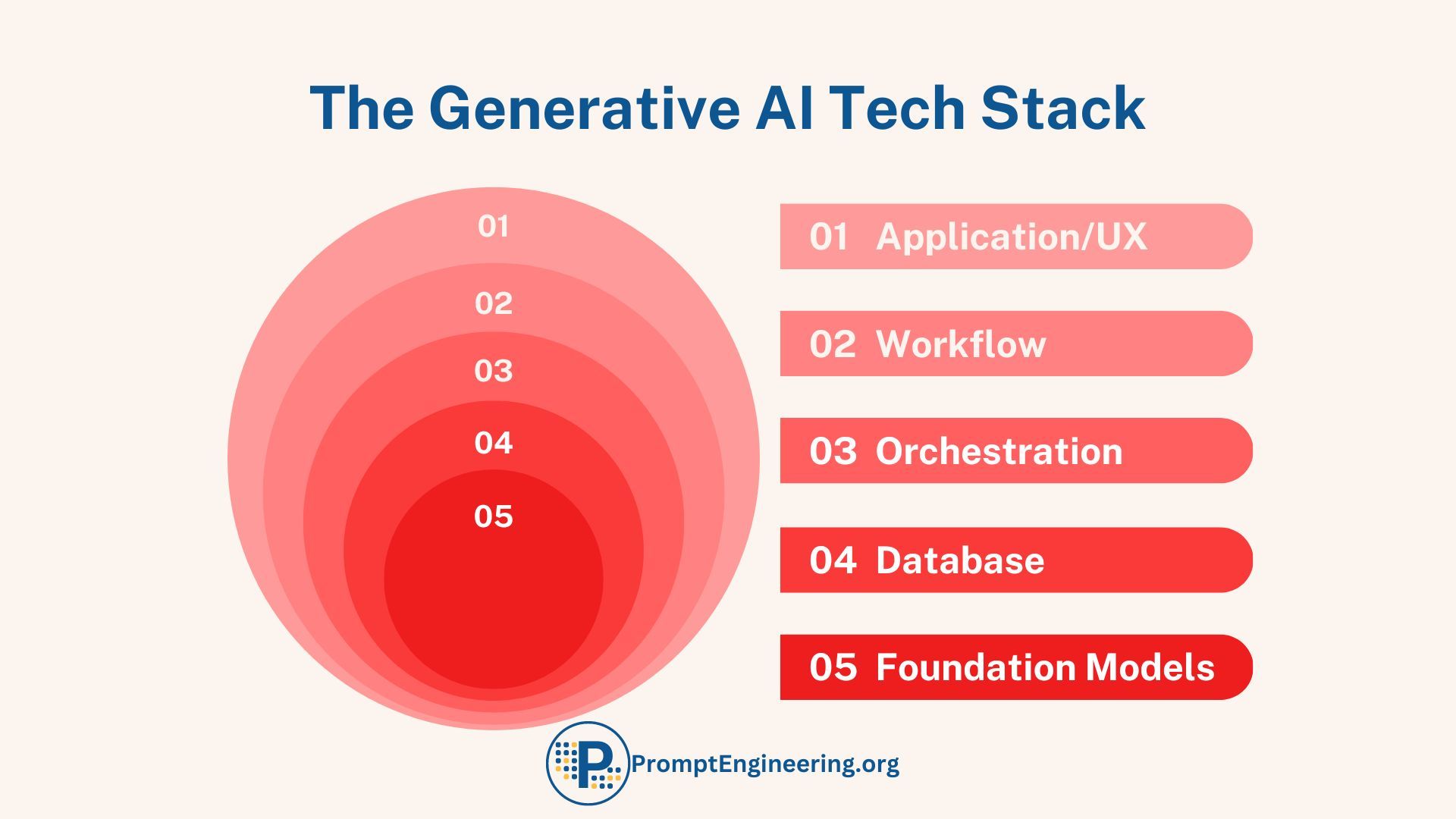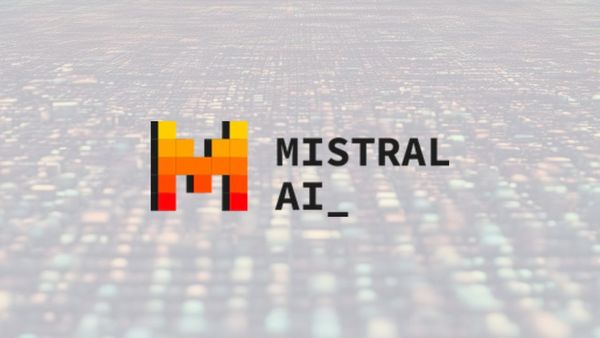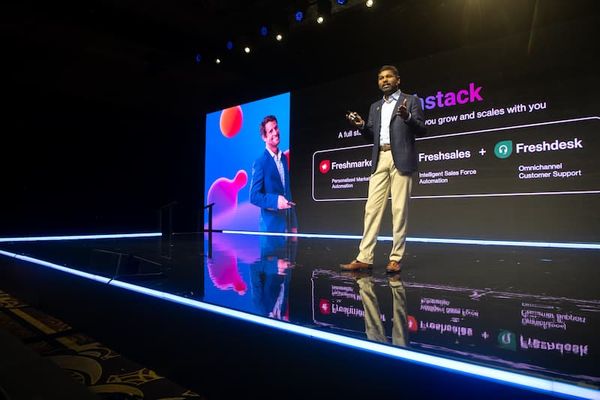While the generative AI gold rush has concentrated power and profits in big tech's picks and shovels, the applications layer remains a highly competitive battleground where agile startups can still find success through smart strategies of rapid adoption, integration, and feedback loops.
Introduction
After engaging with over 100 AI startup founders this past year, I've noted 4 key risks and 20 key strategic insights tailored to the unique challenges facing generative AI companies. While some strategies are akin to traditional software startups, the realities of building on generative models demand tweaks and special considerations.
For example, rapid iteration with minimum viable products is standard startup advice. But AI startups must iterate even faster before commoditization kicks in. Their MVPs may need to live for weeks, not months.
Testing narrow niche markets first also takes on new importance given the ease for generative AI apps to expand scope later. Starting broad invites direct competition from chatbots like ChatGPT, Claude and others.
Traditional software playbooks would emphasize locking down IP and patents early. But generative AI has murkier IP due to dependence on outsourced foundations - so branding and community may confer better defensibility.
These kinds of nuanced takes, permeated my discussions with AI founders. While leveraging best practices from software startups overall, what was really need and highlighted were areas requiring re-optimization for the exploding generative AI space.
In follow-up articles, I will dive deep on each of the 20 strategy suggestions that came up most frequently in my consultations. There are rich insights to unpack on the unique strategic challenges startups face as they stake their claim in the AI gold rush.
Let me know if you would like me to expand on any of the examples mentioned here or have additional themes you would like to explore in this series on startup strategy insights for generative AI. I'm excited to dive fourth
A Gold Rush
The advent of generative AI has sparked a new gold rush, with startups and entrepreneurs racing to stake their claims across endless use cases. While big tech may dominate the picks and shovels of foundational models and infrastructure, the application layer remains wide open for prospectors, but it's closing in fast. For developers not building full-stack solutions, like Writer.com, this presents a major opportunity - with some creative thinking.
Accessing raw generative power is just an API call away today. Closed source models like DALL-E and GPT-4 can be readily implemented, allowing anyone to tap into their remarkable capabilities. The hard infrastructure problems are handled.
The same may be said for , Open-source models like Stable Diffusion and Llama-2, that can be easily self-hosted and maintained as well as there are growing number of 3rd party providers offering open-sourced models with just a call of an API.
This leaves ample room at the application layer for startups to compete through differentiation. With imaginative prompt engineering, thoughtful UI/UX design, and savvy marketing, entrepreneurs can still build defensible businesses.
Prompt engineering unleashes the functionality at the core of your app's use case. Clever prompting and design distil workflows into concise AI instructions that unlock utility. The prompt recipes and workflows are the secret sauce.
Equally important is crafting an intuitive, engaging user experience. The superior design turns raw generative power into beloved products that drive adoption. Marketing and branding sets you apart.
While the picks and shovels are dominated, the application vein still glitters. For developers aiming to stake out valuable claims, prompt engineering, UX design and branding offer sources of leverage. Combine these with the other sound strategies across privacy, security and more to strike AI gold. The application frontier remains full of opportunities for enterprising founders.
Applications Level Playing Field
The applications layer is where generative AI gets applied to real-world use cases for consumers and businesses. This layer is more heterogeneous than the concentrated foundation model and supporting infrastructure layers.

Both large incumbent enterprise software companies and scrappy new startups are competing to bring AI applications to market across diverse industries and niches.
Salesforce, Microsoft, and SAP are leveraging their broad platforms, distribution channels and trusted brands to rapidly launch new "copilot" style AI features. Google is baking generative writing capabilities into Docs and Gmail.
But startups also see an opportunity to provide specialized, best-of-breed AI apps in fields from marketing to real estate design before being subsumed into the tech giants' stacks.
The Major Risks for GenAi App Developers
While opportunities abound in generative AI applications, entrepreneurs cannot ignore the risks. I can't list all the risks here but three threats loom large - commoditization, official add-ons, and no-code and open-source platforms.
Big Tech chatbots like ChatGPT and Google Bard may directly compete with and commoditize startup offerings through robust functionality prompted by users.
A proliferation of official plugins and third-party browser extensions also raises the bar, as they increase baseline chatbot capabilities for free.
Finally, easy-to-use no-code tools let competitors rapidly duplicate ideas, eroding technical advantages and open-source alternatives that may be laughable on day one but are being rapidly developed and improved by the community.
Competition and Commoditization Risks Loom Large
A sobering reality check awaits entrepreneurs dazzled by generative AI's possibilities - many use cases can already be handled quite capably by free services like ChatGPT (or Claude, You.com, Pi, PerplexityAI and many more) itself with the right prompting. This commoditization risk is the elephant in the room.
While apps focused on nuanced vertical domains can differentiate themselves (even though this gap is narrowing), horizontal use cases face direct competition from Big Tech's own bot offerings. Why pay for a "Copilot for X" if ChatGPT can be prompted to perform the same task? PerplexityAI and Claude (and the myriad of chat-with-your-pdf apps) can read your documents and allow you to extract the information you want in the manner you want.
A prime example is JasperAI, a marketing-focused startup valued at $1.5 billion, just one month before ChatGPT's release, which relied heavily on GPT-3. When ChatGPT launched with superior generative capabilities tailored to conversational AI, JasperAI's value proposition (and most of its customer base) was commoditized almost overnight.
.jpg)
Startups must answer this question clearly through some combination of superior prompt engineering, seamless workflows, branding and customization. Offering proprietary value beyond what users get by asking ChatGPT directly is key.
If Big Tech commoditizes the core functionality of your app into its ubiquitous chatbots, your startup may face a short life. Generative AI's low marginal cost is a threat.
This ever-present risk of commoditization should instil a sense of urgency and laser focus on sustainable differentiation. Promoting unique benefits beyond DIY prompting is essential from day one.
Rapid Adoption and Competition
The speed of generative AI adoption has been unprecedented, leading to a Cambrian explosion of startups trying to stake their territory. Proprietary models like GPT-4 were launched less than a year ago, but already over 300 companies have access and have built apps using the API.
Demand is voracious - ChatGPT gathered 100 million users in only 2 months. This breakneck pace means competition is intense as startups scramble to fulfill needs before rivals. Venture funding in generative startups skyrocketed from nearly zero to $1.7 billion in 2022. Thousands of startups are vying for a piece of the AI pie rush across diverse domains.
Official Addons and Extensions Raise the Bar
Beyond core chatbot offerings, startups also face tough competition from a proliferation of official addons and third-party browser extensions augmenting platforms like ChatGPT and Google Bard. These amp up baseline functionality dramatically for free.
ChatGPT's official plugin library (have you tried Code Interpreter?) brings advanced capabilities like data analytics, advanced content creation, code environments and completion, integration with popular apps such as Google Sheets, Notion, Whimsical, Kayak and Experida, access to the web, chatting with your documents, and diagram creation (and basically anything you can think of) directly in-app. Meanwhile, Chrome extensions like HarperAI add a host of professional tools and prompts to ChatGPT.
The popularity of these value-adding extensions means users enjoy powerful, diverse functionality without ever needing to switch apps. Big Tech is expanding virtual assistants into versatile one-stop shops.
To survive, startups must identify gaps NOT easily filled by official addons and extensions. They should focus on specialized workflows where bespoke customization and industry expertise are hard to replicate. There are still niches too complex for plugins.
No-Code Solutions Lower the Barrier to Entry
The proliferation of user-friendly no-code platforms presents both opportunities and risks for generative AI startups. While no-code democratizes creation, it also lowers the barrier for competitors.
Services like Bubble, AppMaster and Thunkable allow anyone to build web and mobile apps via drag-and-drop interfaces and prebuilt components - no coding required.
Integration services like Make (formerly Integromat) and Zapier make it easy to connect apps to Generative AI APIs with pre-packaged connectors and workflows - again no coding needed.
This enables solo founders and small teams to rapidly develop AI prototypes and MVPs. But it also means that each startup's unique advantage erodes quickly as competitors replicate their approach with no-code tools.
The game becomes less about technical complexity and more about branding, marketing and nailing the right product-market fit first. No-code is a tailwind for early testing, but a headwind once you have an MVP.
Startups should thus double down on their lead by building in defensibility factors like excellent UX, strong brands, and proprietary data. Assuming technical hurdles alone will protect against competitors is faulty.
Open Source Alternatives Can Erode Value
The open-source ethos runs deep within AI, and startups must contend with this community releasing free alternatives to many commercial offerings. GitHub hosts dozens of generative AI projects that can undermine app businesses.
For example, open-source Open Assistant presents a free alternative to writing assistance startups. Open Interpreter then takes it further by enabling text prompts to run code locally, rivalling process automation apps and even OpenAi's Code Interpreter ChatGPT plugin.

Quivr is another great app that pitches itself as an open-source alternative to note-taking tools like Obsidian infused with the power of generative AI models like GPT-3. Why pay for an AI-powered productivity suite?
While less polished than commercial tools, these free open-source options pose a constant threat as they improve. Passionate developer communities quickly build remarkable prototypes and products.
Startups need a compelling answer for why a customer should pay for their app versus using a free open-source option or self-servicing with AI model APIs. This calls for exceptional Prompt Engineering, UX and branding beyond basic utility.
Of course, open-source software can also be an opportunity for commercial partnerships, support and services. But ignoring free alternatives risks fast disruption. Startups must preemptively differentiate.
Strategies for GenAI Startup Success
Given the frenzied activity, the unique risks, and the pace of development, how can startups survive and thrive? They need strategies to achieve defensibility and prevent their niche from being absorbed by competitors or tech giants:
My Top 5 Strategies Right Now For GenAI Apps
- Naming, Marketing and Branding - Marketing builds emotional connections between users and AI brands.
- User Experience Design - Good UX design is key for user adoption and retention of AI apps.
- Prompt Engineering- Prompt engineering is the key to applying generative AI successfully and maintaining output quality. Curating an extensive library of optimized prompts enhances consistency. Prompt recipes and workflows must be continuously retested as models evolve.
- Integration - Tight integration into customers' existing processes and systems will make applications stickier and harder to displace later. APIs and partnerships with platform companies can help.
- First Mover - Building a user base and brand quickly lets startups gain data to improve their apps as well as insights into product-market fit. First-mover advantage will be key.
But Don't Ignore These 15 Strategies for Your AI App
- Adopting a Customer-Centric Approach is Key - Deeply understanding user needs ensures product-market fit.
- Feedback loops - Human-in-the-loop approaches where users refine and guide the AI will let startups build the feedback flywheels needed for sustained differentiation.
- Forging Strategic Partnerships Creates Synergies - Partnerships augment capabilities and distribution.
- Plan for Scale and Optimize Performance - Architecting for elastic scaling prepares for growth.
- Rigorous Market Research and Competitive Analysis is Imperative - Continuous market research provides strategic foresight.
- Robust Data Security and Privacy is a Must - Protecting user data is table stakes for AI startups.
- Safeguarding IP is Vital - Legally protecting intellectual property assets is imperative.
- Sustainable and Ethical AI Builds Trust - Responsible AI practices build durable public trust.
- Personalization and Customization Drive Engagement - Tailoring experiences boost user engagement over time.
- Plan for Cross-Platform Compatibility - Supporting diverse platforms maximizes reach.
- Build Community for Win-Win Success - Engaged user communities drive loyalty and growth.
- Stay Ahead of the Regulatory Curve - Proactive ethics and compliance avoid regulatory pitfalls.
- Pursue Mutually Beneficial Partnerships - Strategic partnerships provide innovation boosts.
- Embed Feedback Loops for Continuous Improvement - User feedback powers continuous product improvement.
- Proactive Risk Planning Prevents Disaster - Proactively identifying and mitigating risks prevents crises.
Let's dive in..
Prompt Engineering is Critical
With generative AI applications, prompt engineering is rapidly becoming a crucial skill set that can make or break startups.
Prompts are the instructions that guide Foundational Models to produce useful outputs for specific tasks. They distil workflows into concise natural language descriptions of the desired AI behaviour.
Prompt design and flow will often be the key competitive advantage for generative AI app. Adding advanced frameworks such as CRISP and using techniques such as AI agents, GAINs and SIPA can enhance workflows, output and security.



Carefully engineered prompts unlock generative models' capabilities and channel them towards fulfilling concrete use cases. They are the UX for communicating with AI.
Startups must iterate prompts systematically to optimize the accuracy, relevance and completeness of model results. Teaching AI nuanced tasks through prompting is an art and science.
Testing prompt recipes across diverse user cohorts surfaces biases and failures to generalize. Prompt tuning should continuously incorporate human-in-loop feedback.
Preparing and curating categorized prompt libraries allows reusability across the organization and users, avoiding reinventing the wheel.
For startups, prompt engineering prowess will separate the best-in-class applications from the mediocre. Prompts are the lifeblood flowing through generative AI apps.
Prompt Engineering Drives Output Quality
With generative AI applications, sustained success ultimately comes down to one factor - the consistent quality of outputs delivered to users. This hinges on masterful prompt engineering.
The formula is simple: Quality Output = Foundational Model x Prompt Engineering. For most startups not building custom models, the prompts and the structures that preceded them are the only variables they control.
Prompt engineering unlocks the potential of pre-trained models like DALL-E, Stable Diffusion and GPT-4, guiding them to produce useful, relevant, accurate and personalized results. Poor prompt engineering leads to "poor" and inconsistent quality output.
Startups must invest heavily in honing prompt recipes and libraries tailored to their specific use cases and audiences. Templates should be iterated endlessly based on real-world testing and usage data.
With the foundational model largely fixed, prompt engineering optimization is the only reliable way for startups to enhance their application's output. It is the craft that elevates AI utility.
At the core, customers ultimately care about the solutions generative AI provides in their daily lives and workflows. Prompt engineering makes the difference between delight and disappointment.
Building a Robust Prompt Library is Essential
Succeeding with prompt engineering requires much more than just creating one-off prompts. Startups need to invest in curating and iterating on an extensive library of proven prompt recipes and templates over time. This is the engine that drives AI application output quality.
Prompt recipes that reliably produce useful results for key workflows should be catalogued and continuously optimized. As foundational models evolve, prompts must be re-tested and tuned accordingly.
Expanding the knowledge bases that prompts rely on is also important to broaden capabilities. Clean, well-structured data will enhance prompt accuracy and relevance.
For each major app update, prompt performance benchmarks should be re-established across all use cases. Prompts that lag must be debugged and upgraded.
With diligent prompt library management, startups can maximize uptime of a polished set of prompt templates optimized for their users' needs. This directly translates to high-quality generations and thus satisfied customers.
Continuous Prompt Testing is Imperative
As discussed, new model versions are released at breakneck speed, with ever-increasing capabilities. However, this also means prompt results may degrade or change unpredictably.
To ensure consistent output quality, startups need a prompt engineering process focused on continuous development and testing. All key prompts and flows should be re-evaluated against new models.
Without rigorously checking for breaks, inconsistencies or errors in generated content, overall output quality may suffer. Users will quickly become frustrated and churn to competitors.
Regular regression testing prompts against updated Foundational Models are thus essential. Prompt libraries need to be living documents, with templates retired, tweaked and added frequently.
Prompt engineering mastery requires acknowledging generative AI as a moving target. Static prompts lead to stagnant quality. Testing early and often is imperative for startups crafting AI applications.
Speed to Market and Scale is Critical
In the rush to capitalize on generative AI, speed to scale will separate the startup winners from the rest of the pack. Building a large user base quickly will provide startups with distinct competitive advantages they can leverage before Big Tech dominates.
First-mover advantage is always valuable, but it will be even more decisive in AI applications where network effects kick in. The more users a startup can acquire fast, the more data they can feed back into improving their AI models. This creates a flywheel - better generative quality attracts more users which provides more feedback to further enhance quality.
Early user growth will also provide insights into product-market fit, allowing startups to hone their positioning and marketing. They can move swiftly from direct-to-consumer to pursuing viral growth by developing partnerships and integrations.
Speed requires rapid iteration and releasing minimum viable products rather than polished apps. Startups need to slave their bikeshedding and launch fast, then keep optimizing. Aggressive user acquisition is also crucial - using viral hooks, influencer marketing, and even paid ads to scale rapidly.
This sprint mentality is second nature to consumer startups but can be a culture shock for more deliberate enterprise startups. The playbook has changed - in the age of AI "move fast and break things" rings truer than ever.
The winners of the AI application gold rush will be those startups that throw out the traditional playbook and embrace speed, rapid-fire iteration and aggressive early growth tactics. The laggards will soon get left behind once the Big Tech wave rolls over them.
Integration is Imperative
To defend their niche, startups must entrench themselves into customers' workflows as deeply as possible. Generative AI apps that are tightly integrated into existing processes and systems will become indispensable over time.
Rather than standalone point solutions, startups should aim to embed themselves into the enterprise tech stack. This turns their AI into a mission-critical cog that is painful to replace.
APIs and partnerships with major horizontal platforms can aid this integration. For example, integrating bid management AI with Salesforce CRM data or integrating your social profile analysis with Hootsuite makes it much stickier than a siloed tool.
Startups should identify workflows where AI can be seamlessly layered in, to automate rote tasks. For instance, invoice processing software company Anvil uses AI to auto-fill information and simplify workflows for accountants.
Well-designed integrations will demonstrate value and productivity gains quickly. Once employees and invididuals build new processes around AI, unwinding it later is challenging.
Over time, reinforcing network effects take hold - the more AI gets used, the more data improves its performance, locking customers into your solution.
By cementing themselves into business processes, startups can gain a competitive moat against being commoditized. Even Big Tech will find it harder to displace specialist AI that has become deeply embedded into core workflows.
The startups that successfully integrate pervasively will make their services indispensable. This defense-in-depth approach is key to thriving long-term in the AI applications gold rush.
Obsess Over User Experience Design
In the app age, user experience is king - no matter how stellar the backend AI and generations, bad design kills adoption. Startups should thus invest heavily in crafting intuitive, engaging interfaces upfront.
Hiring specialized UX designers from the start allows iterating on usability long before launch. Testing concepts via prototypes and surveys surfaces pain points early when easy to address.
Accessibility considerations like screen reader compatibility are also important to expand the addressable market. Designing for the diversity of real-world users avoids exclusionary mistakes.
Creative interaction patterns guide users seamlessly through workflows while keeping them informed on system status. Well-placed notifications prevent opaque black box perceptions.
Delightful touches like personalized content, drag-and-drop interfaces and clear visual language drive ongoing engagement after onboarding. Usability should be continuously optimized.
For AI apps, UX is not just icing on the cake - it's a competitive edge. Startups who nail user experience design gain the organic growth flywheel effect that success demands.
Choosing the Right Name for GenAI App
When launching a startup, one of the most important early decisions is choosing the right name. The name should resonate with the target audience and convey the key features and benefits of the product or service.
First, founders need to thoroughly understand their target demographics, psychographics, and firmographics. With this knowledge, they can craft a name that will stand out and appeal to these potential customers. The name should communicate the core functionality and value proposition in a memorable way. It can help to include familiar words or alliterations to make it stick in people's minds.
Brevity and catchiness are also key. Look at successful startup names like Facebook and Twitter that are short, punchy, and evocative. Securing the ideal ".com" domain name for your startup is critically important, as most users will instinctively type the ".com" version into their browser.
While tech-savvy users may understand new domain extensions like ".io" or ".ai", the vast majority of mainstream consumers will gravitate to the ".com" name. Do everything possible to register your desired ".com" domain,
In some cases, the perfect ".com" name may be unavailable or unaffordable. This presents a challenge, but remain flexible. Consider alternative names or strategies.
For example, when Meta launched its Threads social networking app, they were unable to secure Threads.com, so went with Threads.net instead. However, many users instinctively tried going to Threads.com first, which saw a huge spike in traffic from people looking for the network. This illustrates the importance of the .com domain, as most mainstream internet users will automatically type that when looking for a new
Choosing the right startup name and domain is complex, but critically important to give your business the best chance of resonating with your audience. Follow these naming best practices, be creative, and you'll be off to a great start.
Marketing and Branding are Crucial
In the current crowded generative AI landscape, building an emotive brand and implementing savvy marketing will be make-or-break for startups. Superior technology alone is not enough - companies need to creatively stand out and tell their story.
Startups should develop a unique brand identity and positioning. Conveying a personality that users can relate to is crucial for next-gen AI apps seeking to build trust and familiarity quickly.
Digital marketing across social, search, and banner channels should be optimized to target early adopters open to trying new AI capabilities as they emerge. PR and influencer outreach also builds valuable buzz.
But brand-building cannot be delegated solely to marketing. The entire company needs to live its differentiating values across all customer touchpoints. This creates the foundational appeal on which compelling marketing can then be built.
Customer testimonials and case studies that showcase concrete value from using your AI app are powerful social proof tools as well.
In essence, marketing and branding build the emotional bridge to customers. Successful startups will invest as much in crafting their image and outreach as in developing the technology itself.
Feedback Loops are Foundational
Human-centred feedback loops will be the cornerstone enabling startups to evolve their AI applications and maintain a competitive edge. User input should be viewed as an asset to recursively improve quality.
Rather than fire-and-forget static models, startups should employ human-in-the-loop design patterns. Simple examples include ratings, surveys, and quality checks by users on the AI's performance.
More advanced techniques like recursive learning through reinforcement of desired AI behaviors will require investment. But this pays off over time as the startup's app gets smarter and more attuned to customers' needs through constant feedback.
Feedback loops create a flywheel effect - better alignment with user goals increases adoption and data collection, further refining the AI in line with real-world usage. This self-reinforcing cycle can help startups pull away from rivals.
Startups should leverage tight feedback loops to rapidly iterate on their AI apps. Quick build-measure-learn cycles will reveal flaws and training gaps that can be addressed through more human tuning.
Making the AI feel collaborative by seamlessly incorporating human guidance counters fears of black-box opacity. Over time, tight symbiosis between users and AI builds durable trust and loyalty.
In the Wild West of generative AI, customer-centric feedback loops can be a differentiating weapon for startups. Wise prospectors will value and continuously mine user input to sustainably strike gold.
Adopting a Customer-Centric Approach is Key
Taking a customer-centric approach by deeply understanding users' needs and pain points will ensure generative AI applications resonate with real-world demand. This can become a key competitive edge.
Many AI startups fall into the trap of technology-driven innovation, creating "cool" applications without truly addressing customer jobs to be done. Winning startups will avoid this by embracing customer obsession right from the start.
This means thoroughly researching target users and use cases before writing a single line of code. Developing detailed personas and user journey maps enables startups to identify customer needs and friction points.
Ongoing customer dialogue is also crucial. Startups should conduct regular surveys, interviews and ride-along with users to gather insights during application development and post-launch.
Iterating based on user feedback should become a core piece of the startup's operating model. Building mechanisms to capture both qualitative and quantitative data directly from customers is advised.
This market-back approach ensures the startup's AI application solves real problems for customers in a tailored fashion. The goal is delightful end-user experiences that drive adoption.
Taking the time upfront to deeply understand the customer before diving into technology is counterintuitive but pays dividends. Startups that faithfully practice customer-centricity will have an edge in making their AI applications indispensable.
Forging Strategic Partnerships Creates Synergies
In the dynamic generative AI landscape, startups should strategically pursue partnerships and alliances to augment their capabilities and market access.
Potential partners include research institutions, universities, other startups and companies developing cutting-edge AI techniques. Collaborating on projects and sharing knowledge could give startups R&D capabilities that are hard to build independently.
Partnering with relevant industry players can also pay dividends. Domain experts in target verticals can provide valuable perspectives on customer needs, as well as prime pilot opportunities.
Platform companies with broad reach should be considered key targets for partnerships. Integrating with Salesforce, Shopify or other similar SaaS giants can significantly expand distribution.
Forming alliances allows startups to focus their efforts on core competencies while benefitting from partners' complementary strengths. Simply put, the whole becomes greater than the sum of the parts.
However, strategic partner selection is critical - poorly chosen partnerships can become distractions. Startups should seek win-win scenarios that align incentives around common goals.
Once strong synergistic relationships are forged, they can become a source of competitive advantage. Winning AI startups will thoughtfully leverage strategic alliances to punch above their weight.
Rigorous Market Research and Competitive Analysis is Imperative
Given the dynamic nature of generative AI, startups must continuously conduct market research and analyze competitors to identify opportunities, and adapt strategies ahead of trends.
Ongoing assessment of the competitive landscape is crucial to anticipate threats. Startups should regularly audit rival offerings, pricing, partnerships, marketing and funding to update their SWOT analysis.
Market research tools like surveys, user interviews and search analytics provide actionable data on customer needs and behavior trends. This can reveal white space opportunities.
Startups should also track high-signal macro factors like VC funding patterns, M&A deals, regulatory shifts, and technology breakthroughs to infer where the market is headed.
By combining competitive intelligence and market research, startups can notice changing winds early. This allows them to adjust their course and avoid sudden squalls.
Careful market evaluation and environmental scanning should be a habit, not a one-off. Startups need their finger on the pulse of the fast and perpetually changing generative AI market to steer through to blue oceans.
Making research and competitive analysis core practices will provide strategic foresight. AI startups that stay rigorously informed, gain an edge to navigate the headwinds and sail ahead of the competition.
Robust Data Security and Privacy is a Must
With generative AI's reliance on user input data, upholding rigorous data security and compliance practices is table stakes for startups. Customers will accept nothing less, especially in high-stakes domains, and regulators are also watching closely.
Startups must implement state-of-the-art security protocols spanning encryption, access controls, multi-factor authentication, and cybersecurity auditing. Adhering to global standards like ISO 27001 and HIPAA is highly advised.
Staying continuously informed about evolving data protection laws across jurisdictions is also critical. Startups need policies and architectures that enable compliance with regulations like GDPR in Europe and CCPA in California.
All customer data collection, sharing and retention should be examined through the lens of transparency, consent and purpose limitation. It is also wise to institute third-party ethical reviews of datasets and relevant policies.
Making assurances of privacy preservation and responsible data practices is central to branding and positioning and helps build user trust quickly. Independent certifications can add credibility.
By ingraining robust security and compliance by design, startups demonstrate that upholding public interest is a priority, not an afterthought. This prudence will distinguish winners in the race to monetize generative AI responsibly.
Safeguarding IP is Vital
For generative AI startups, their proprietary data, algorithms and training approaches may be their most valuable assets. Rigorously protecting these intellectual property (IP) crown jewels from theft or misuse is thus imperative.
Startups should actively consider patents, trademarks and copyrights to legally protect their IP like novel architectures, data curation techniques and customized models, as well as their brands. Defensive publications also establish evidence of inventorship.
Robust cybersecurity is critical, including access controls, network segmentation and encryption to secure IP against data breaches and IP theft. Enforcing strict supplier/vendor and employee confidentiality agreements is also advised.
Due diligence around open-source software usage is important to avoid IP contamination that may weaken proprietary claims down the line. Seeking counsel from IP lawyers can provide strategic guidance.
IP protection should be a key priority right from the start as assets are developed. Attempting to retroactively lock down IP is much more difficult and costly. For instance OpenAI and the "GPT" trademark.

For startups betting their future on generative AI innovation, IP may be the goose that lays the golden egg. Safeguarding it via legal and cyber protections will be the foundation of their ability to eventually thrive at scale.
Sustainable and Ethical AI Builds Trust
As public scrutiny of AI increases, adopting sustainable, ethical technology practices will become table stakes for startups seeking to build durable trust in their brands.
Startups should develop clear guidelines and policies for how their AI applications will be developed and deployed responsibly. Ensuring transparency, fairness, non-discrimination and accountability should be core tenets.
Regular audits evaluating metrics like algorithmic bias, user privacy risks and AI safety should be conducted both internally and via third parties. Being proactive beats reactive crisis management.
Particularly for climate tech and sustainability-focused AI startups, carbon accounting and optimizing energy efficiency in computation should be priorities.
Participating in industry associations dedicated to advancing AI ethics, as well as pursuing certifications like the LEAF label for responsible AI, signals commitment.
Startups should also develop clear guidelines and policies for acceptable use of their AI applications, and enforce these rules algorithmically. For example, generative image startups should implement restrictions on producing misleading, harmful or illegal content.
Users should be informed upfront of content boundaries, and active monitoring combined with prompt filtering techniques should algorithmically block policy violations.
Recent incidents like viral fake images of public figures created through AI highlight the need for thoughtful use policies. Proactively building guardrails into AI systems prevents abuse and builds user trust in the long run. Transparent terms of service paired with robust enforcement ensures startups avoid PR crises from unethical application of their technology.
Taking the high road on ethics may not seem the fastest path during AI's gold rush - but sacrificing values for growth often backfires long-term. Sustainable startups in it for the long haul know ethical AI pays off.
Plan for Scale and Optimize Performance
The viral nature of today's hottest generative AI apps means surges in usage can happen almost overnight. Startups need robust scalability and performance to handle sudden spikes without interrupting service.
From the outset, system architectures should be designed for elastic scale-out in the cloud, with auto-scaling groups and database sharding capabilities.
Performance testing under load should occur regularly to catch bottlenecks early. Tuning algorithms and workflows for optimal speed on GPUs, TPUs and specialized AI architecture squeezes out latency gains.
As complex queries against Foundational Models can be expensive, caching common outputs or using cheaper models, where applicable improves response times and reduces compute costs.
Particularly for startups reliant on cloud AI services, optimizing request patterns to stay within budget quotas is advised, at least until funding is secured.
While over-engineering for scale too early can waste resources, too little prep for viral adoption spikes can kill startups outright. Smart planning and continuous optimization are key.
By architecting for scale and tuning performance from the get-go, startups equip themselves to ride the AI rocketship when their big breakout moment comes.
Personalization and Customization Drive Engagement
One of the most powerful advantages of AI is the ability to tailor experiences to each user's unique needs and interests. Startups should bake personalization in from the start to boost engagement.
Allowing even simple customization like username or UI theme selection helps users feel at home. Progressively more advanced personalization leveraging ML recommendation systems and natural language generation keeps things fresh.
Tracking user behaviour and preferences lets the AI platform curate personalized content. For example, a marketing AI assistant could suggest blog topics aligned to a user's reading history.
Hyper-contextual recommendations at opportune moments are impactful, like suggesting a relevant report chart type as the user begins data analysis.
User-specific natural language variations can promote rapport - leveraging preferred terms and tone based on past interactions makes conversations more relatable.
The beauty of generative AI lies in adapting dynamically to each user. Startups that leverage personalization, differentiate themselves through tailored relevance that sticks.
Plan for Cross-Platform Compatibility
To maximize reach, startups should architect for cross-platform compatibility across devices and environments from the initial build. Supporting diverse access methods pays dividends.
Again, responsive design ensures usable rendering on different screen sizes from desktop to mobile. Testing on a range of browsers, operating systems and device types identifies odd quirks.
For messaging and conversational apps, deploying to popular channels like Facebook Messenger, WhatsApp and Telegram amplifies distribution. Native mobile apps also broaden adoption.
Exposing APIs allows partners and technically adept users to integrate your AI into their own solutions and workflows. Enabling embeddable widgets makes onboarding frictionless.
The more omni-channel startups can be, the wider their access to users. Developing with interoperability and integration in mind is the mindset needed.
In an increasingly multi-device, multi-app world, generative AI applications that work smoothly across platforms have a clear edge over walled gardens. Startups should plan for compatibility from day one.
Build Community for Win-Win Success
Savvy startups will foster engaged user communities to drive loyalty and mutually beneficial value creation. Community pays dividends beyond the brand boost.
Online forums, social media groups, and Discord channels give users peer support and human connection. This amplifies onboarding and ongoing assistance at low costs.
Soliciting suggestions and feedback directly from power users helps guide the product roadmap to best meet community needs. Transparency around plans builds goodwill.
Supporting influencers, developers, and partners with early access opportunities turns them into brand advocates. Their creator content and integrations pull in new users.
Uplifting user-created tutorials, demos, and showcases, highlights real-world utility while organically improving documentation.
Providing prompt and empathetic customer service, especially via multi-channel options like in-app chat, satisfies users and heads off complaints.
Done right, community engagement creates a runway for startups to reach product-market fit and build a tribe of brand loyalists who propel growth.
Stay Ahead of the Regulatory Curve
As governments race to regulate AI's impacts, startups must proactively get ahead of the policy curve rather than play catch up later. Keeping an ethical house will pay off.
Continuously monitoring the evolving regulatory landscape across jurisdictions is advised to avoid non-compliance pitfalls. APAC, EU, UK and US rules may diverge.
Developing ironclad Terms of Service, Privacy Policies and acceptable use standards keeps startups on the right side of user expectations and coming laws.
Proactively conducting algorithmic audits, data bias reviews, and impact assessments demonstrates a commitment to ethical AI even in grey areas.
Some firms appoint independent advisory boards of AI experts, policy veterans and customer advocates to guide ethical risk management.
Joining industry associations advocating for constructive regulations builds credibility with lawmakers shaping the rules of the road.
The legal and ethical AI terrain is a minefield but diligent startups can navigate it. Getting compliance right and championing transparency will lift all boats long-term.
Pursue Mutually Beneficial Partnerships
Partnering with academia and industry incumbents can provide generative AI startups with an innovation boost while also improving their brand standing.
Engaging professors and graduate students in research collaborations gives access to bleeding-edge R&D and talented technical hires. Joint grants are often available to fund exploratory projects.
Attending and speaking at top academic AI conferences expands networks into the scientific community. Publishing papers together racks up citations.
Partnering with established players in target verticals opens doors to pilot opportunities, data sharing and distribution channels. The halo effect of big brand affiliations offers credibility.
Joining industry associations and standards bodies influences the future in collective strength while learning from other practitioners.
No startup is an island - we stand on the shoulders of giants. Seeking win-win partnerships amplifies progress in a capital and time-efficient fashion. A rising tide of academic and industry collaboration lifts all ships.
Embed Feedback Loops for Continuous Improvement
To sustain competitive advantage, generative AI startups must embed feedback channels to drive continuous improvement fueled by real user data.
Building mechanisms to gather both quantitative and qualitative customer input should be a priority. Surveys, interviews, in-product ratings, and usage analytics offer complementary insights.
Soliciting user suggestions helps guide the product roadmap to address pain points. Prioritizing features based on customer requests balances business goals with user needs.
Release cycles should provide a steady stream of incremental enhancements rather than big-bang launches. This allows regularly responding to user feedback for course correction.
Proactively checking in with users to assess satisfaction post-purchase is wise. Their experience benchmarks the effectiveness of improvements.
With regular feedback-driven iterations, startups can rapidly hone products to excel at customer jobs to be done. Maintaining open ears leads to customer-centric AI.
Proactive Risk Planning Prevents Disaster
The breakneck pace of change in AI means risk lurks around every corner for startups. From technical debt to data leaks, proactive planning to mitigate risks is mandatory.
Conducting regular risk assessments spanning security, privacy, technical, business and ethics identifies vulnerabilities before they become crises. Prioritizing via impact and likelihood allows focusing defences.
Once top risks are highlighted, contingency plans should be developed to address worst-case scenarios - for example, what if the Foundational Model API shuts down unexpectedly?
Security steps like multi-factor authentication, encrypted data storage and hardened cloud configurations reduce the odds and impacts of cyber-attacks.
Maintaining rigorous version control, code documentation and technical debt management ensures code integrity as complexity grows.
Instituting responsible disclosure policies and bug bounties incentivizes crowdsourced help in identifying flaws.
With foresight and agility, startups can successfully surf the turbulent AI wave. Staying vigilant to emerging risks and having mitigation plans at the ready allows confidently ride the crest of change.
Conclusion
At this point Generative AI is a gold rush moment, sparking fierce competition between startups racing to stake out valuable territory in applications. While major providers control the picks and shovels of models and infrastructure, there remains ample opportunity at the solutions layer.
However, the unique pace and risks of building on top of generative foundations demand rethinking startup playbooks. Prompt engineering, speed of iteration, brand building and ethical AI practices take on heightened importance. Startups who can artfully execute across these strategic dimensions will improve their odds of carving out defensible niches amidst encroaching tech giant competition.
Still, the runway for enterprising founders to strike AI gold remains open. With smart positioning, prompt innovation and rapid user growth flywheels, startups can still thrive at the application layer for years to come. As models rapidly advance, there are always new use cases emerging at the edge. Savvy entrepreneurs who can nimbly adapt to ride each wave as it breaks have room to prosper. While the properties and picks have largely been claimed, the application frontier still offers prospects for those bold enough to stake their claim. With the right map and provisions, the AI gold rush continues.











